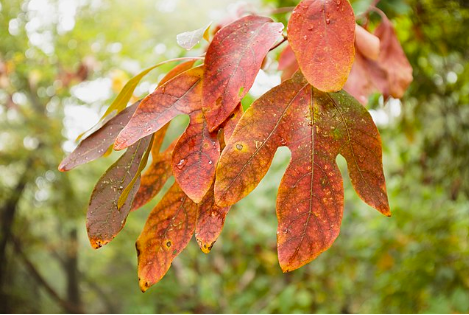As we head into the fall season, we will begin to see the different hues in the foliage, but the science behind the “magic” of changing leaves is far more interesting.
The changing hues of the foliage commence with the chlorophyll breakdown. During the growing season, which takes place from the end of spring to the beginning of fall, leaves are green due to chlorophyll, the pigment that causes photosynthesis. As the season starts to end, the temperature starts to drop and the days are shorter. This activates a signal for the tree to start preparing for the winter, leading to the chlorophyll production to slow down and eventually stop.
As the chlorophyll begins to break down, other pigments in the leaves start to become more and more visible. The chlorophyll masks carotenoids, which produce yellow and orange colors, causing the leaves to be green during the summer.
However in different types of trees like maples and oaks, instead of having carotenoids, the leaves would have anthocyanins, which are activated due to environmental factors such as temperature, sunlight, and soil moisture. Anthocyanins are the pigment that causes leaves to turn purple and red, they are also masked by chloroplast during the growing season. Leaves can also turn into a brownish color due to tannins and waste from the chlorophyll breakdown.
Sophomore Ciara Hassig stated, “The science behind the fall leaves is something kind of shocking. The leaves are also something really cool that I can see every year, and I’d still be in awe.”
In the end, leaves age and eventually fall off the tree which is called leaf senescence. This is caused by the tree trying to conserve energy and resources to survive throughout the winter.
Some places tourists go to during the fall season to look at the colorful foliage are the Biltmore Estate, Great Smoky Mountains National Park, and Grandfather Mountain. Each location has an abundant amount of leaves that makes you feel that fall has truly begun.













